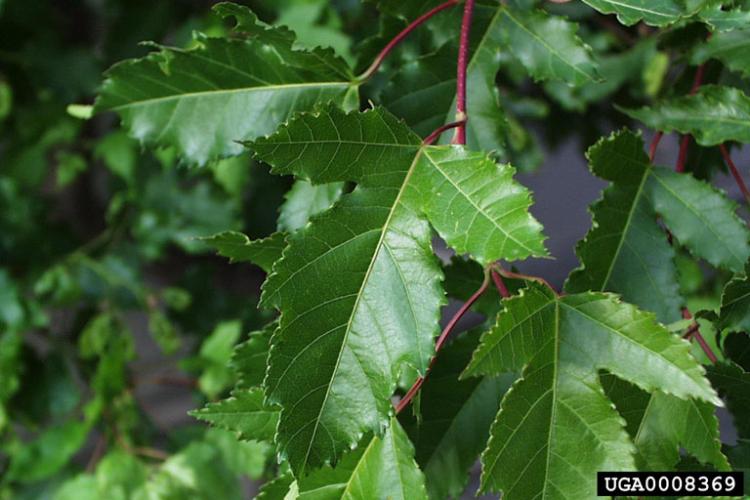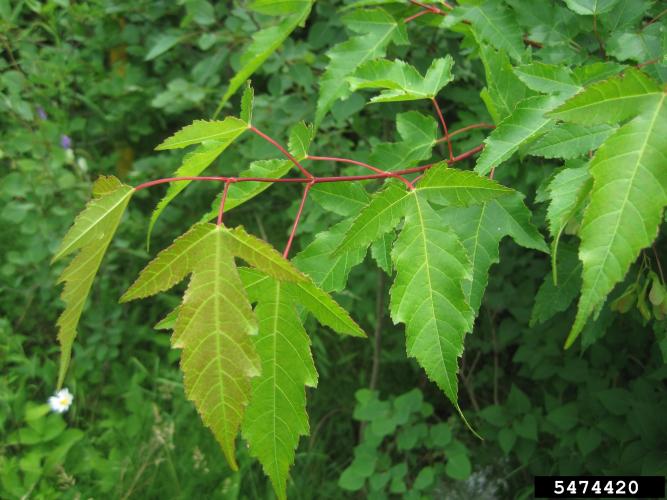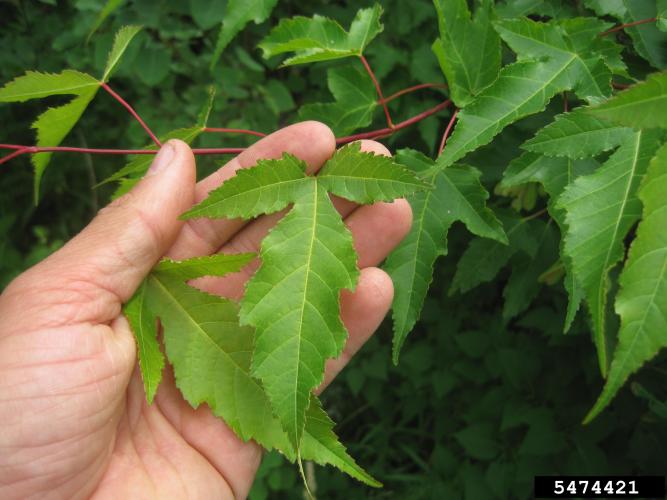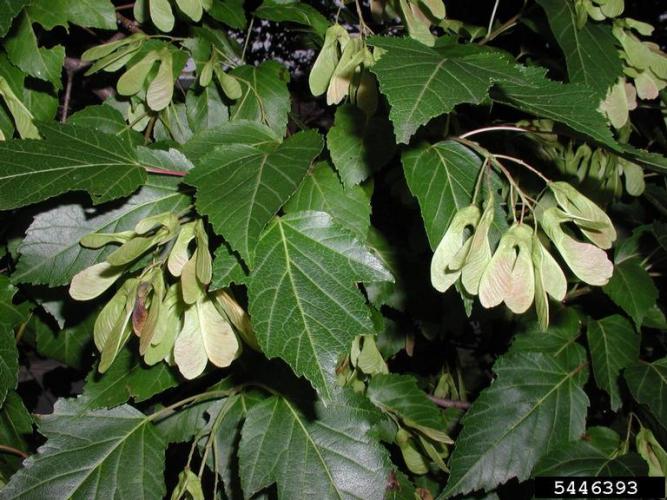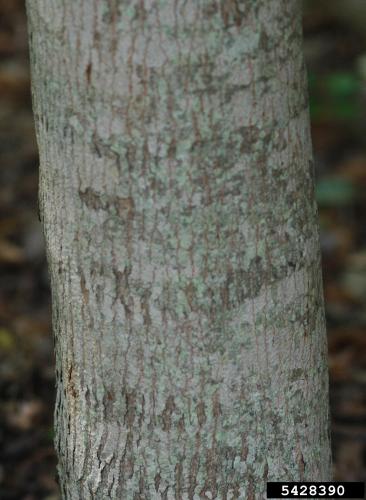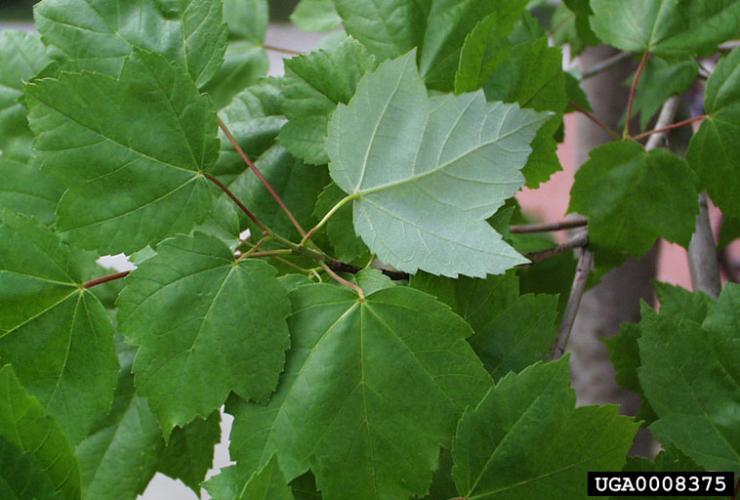Maple, Amur
Identification
Appearance
Acer ginnala is a small tree that grows 15-20 feet in height. The bark of the tree is smooth and gray.
Foliage
The leaves are opposite and 1-3 inches long. They are 3-lobed, with the terminal lobe elongated. The margins of the leaves are doubly serrate. This plant leafs out early in the spring. The fall color of the leaves is usually red, but some are bright yellow.
Flowers
The yellow-white flowers appear from May-June, after the tree has leafed out, and are borne in long-peduncled panicles. These flowers, unlike those of most maples, are fragrant.
Fruit
The reddish fruit, which hang on the tree until late fall, have nearly parallel wings and are 0.75-1 inches long. The seeds of Acer ginnala are dispersed primarily by wind with the help of winged samaras.
Biology
Ecological Threat
Amur maple can displace native shrubs and understory trees in open woods, and shades out native grasses and herbaceous plants in more open habitats. This plant has been widely planted for its hardiness and tolerates a wide range of hardiness zones (zones three through eight).
Origin
Central and northern China, Manchuria, and Japan. Introduced in the 1860s.
Habitat
Forests, forest edges, open disturbed areas, roadsides, ornamental plantings.
Life Cycle
Fall leaf color is a brilliant red. Fragrant flowers appear in loose clusters in May and June. Fruit are numerous reddish, two-winged, inch long samaras that mature in late summer and persist on the tree until late fall.
Vermont Distribution
How You Can Help
Native/non-invasive alternatives
Mountain maple (Acer spicatum), American hornbeam (Carpinus caroliniana), pagoda dogwood (Swida alternifolia)
Native Perennials and Shrubs for Vermont Gardens
Alternatives to Common Invasive Plants and Characteristics of Select Alternatives
Citations
Photo Credit
0008369, Paul Wray, Iowa State University, Bugwood.org
5428390, Karan A. Rawlins, Bugwood.org
5446393, Leslie J. Mehrhoff, University of Connecticut, Bugwood.org
Rob Routledge, Sault College, Bugwood.org
